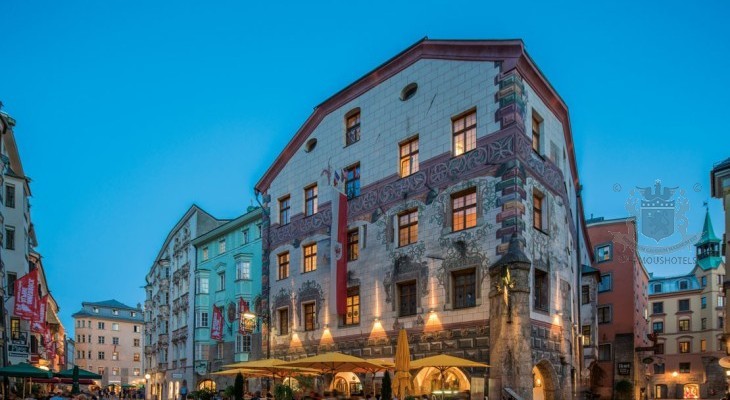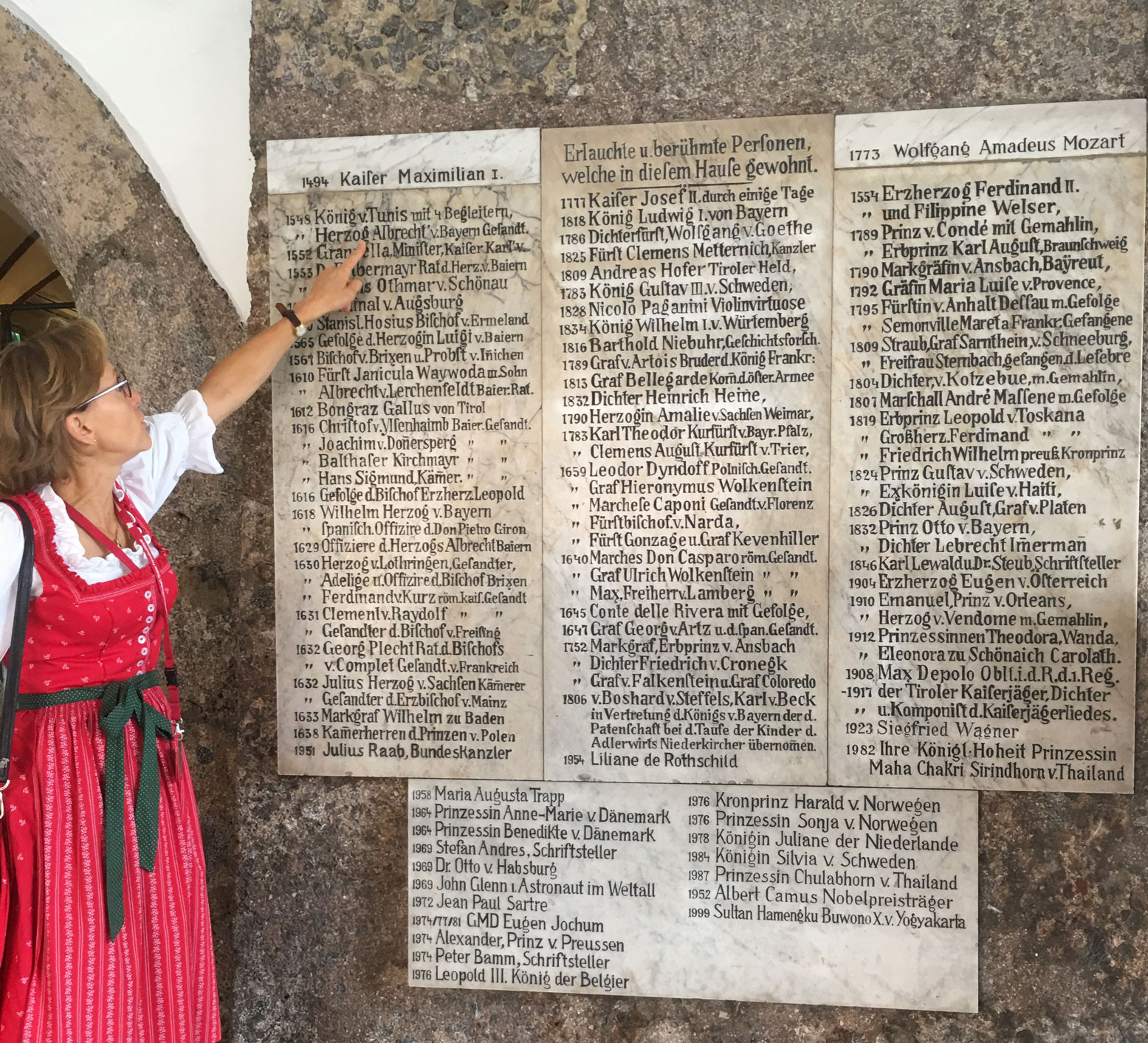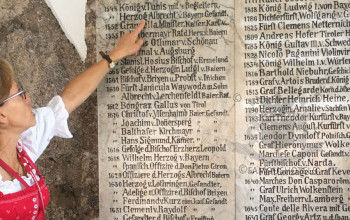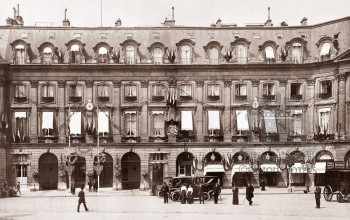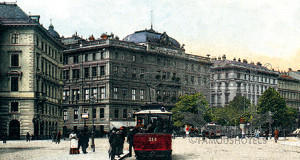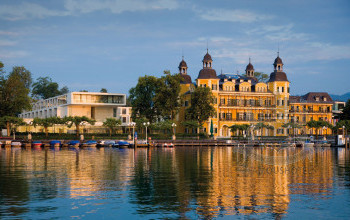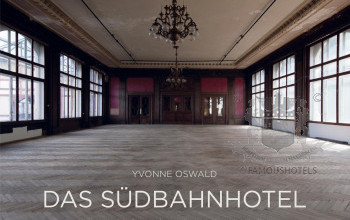Goldener Adler, Innsbruck
( words)
Innsbruck's Hotel Goldener Adler "Golden Eagle" was pretty much the first hotel travellers reached after crossing the River Inn and entering the city walls. Since 1390 many different families have greeted kings and emperors, diplomats, scientists, poets, and composers at the hotel near the old Ottoburg gate. The latest owners are the Hackl family, who took over in March 2004 and are remain very enthusiastic about this iconic property.
Thomas Hackl’s father used to run the Ottoburg restaurant just opposite the Goldnener Adler and Thomas grew up very aware of the historic hotel with all the names of famous guests inscribed on four marble plaques outside its main entrance.
Left: Carved in stone, the list of famous visitors outside the Goldener Adler in Innsbruck, Tyrol (click to enlarge)
There is Mozart in 1773, his future patron Emperor Joseph II in 1777, Paganini in 1828, and Heine 1832. In that same year Prince Otto of Bavaria, about the become the first king of modern Greece also stayed. In the twentieth century the hotel received – amongst many, many others - Siegfried Wagner in 1923, Maria Augusta Trapp in 1958, Astronaut John Glenn in 1969 and Jean Paul Sartre in 1972.
The Goldener Adler is not just a comfortable and friendly hotel, it's one of great the landmarks of Innsbruck with protected heritage status. According to Thomas this means he has to get permission from the Denkmalamt even to stick a nail in a wall. And air-conditioning through walls that cannot be breached is no easy business. Nevertheless change is happening. The historic three-roomed restaurant on the first floor – the Andreas-Hofer-Stube, Mozartstube and Kaiser-Joseph-Stube - is being moved downstairs after centuries of gazing out on to Herzog-Friedrich-Straße. Those three rooms with their stained glass windows commemorating historic owners of the hotel -like the Niederkircher and Cammerlander families – are now the hotel's newest bedrooms.
“In the old days the ground floor was kept open to the street so horses could be tethered and in case of floods from the river. So naturally the restaurant was on the first floor up a flight of stone steps,” says Thomas as he shows me around. "The kitchens were up there too. But previous owners had already created a breakfast room downstairs. In fact we now have two dining rooms on the ground floor - Batzenhäusl and the Goethe-Stube, named after another famous guest - so it no longer makes sense to have waitstaff going up and downstairs all the time. Soon more new bedrooms will be created on the first floor where the old kitchens were and a new kitchen is already being created downstairs."
It’s an ambitious project but it brings the Goldener Adler into the twenty-first century. At the moment Thomas is resisting Best Western’s request that the hotel goes over to electronic key cards, common in all other properties marketed through the company. Thomas has achieved a dispensation to continue with the hotel’s heavy embossed metal keys until 2021 (and famoushotels shall intervene if this is going to be changed! Talking about key to success!).
Another innovation that is being more enthusiastically embraced is providing mobile phone information about the famous guests who stayed during the hotel's 700-year history. At the moment as you pass each bedroom door there is a large plaque that reads “Nice to have You Here” and then gives brief details of a famous hotel guest, for example, Andreas Hofer outside Room 208, Wolfgang Amadeus Mozart outside Room 307 and Jean Paul Sartre outside Room 404. These are “tribute” rooms. No one really knows whether Heinrich Heine was holed up in 303 back in 1832. Or Albert Camus in 410 in 1952 or King Leopold III of the Belgians in 408 in back 1976. Each room has been assigned its famous guest.
But these plaques cannot convey much information, especially as hald the text is in German and half in English and so Thomas is proposing to have an electronic information point outside each room from which guests can use their mobile phones to download abundant information in their own language.
Nevertheless the hotel will only move gradually with the times. A number of guests have questionedwhether it is tasteful to display so many hunting trophies overhanging one of the staircases. The deer, stag, chamois and bison, their heads displayed with some quite hefty horns, were all shot by Thomas’ father Josef Hackl, and Thomas feels that they are an integral part of Austrian culture. Certainly anyone who has been to Bad Ischl and seen 21,000 of Franz Josef’s hunting trophies on the walls will know what he means. Thomas has no plans to move them just yet.

